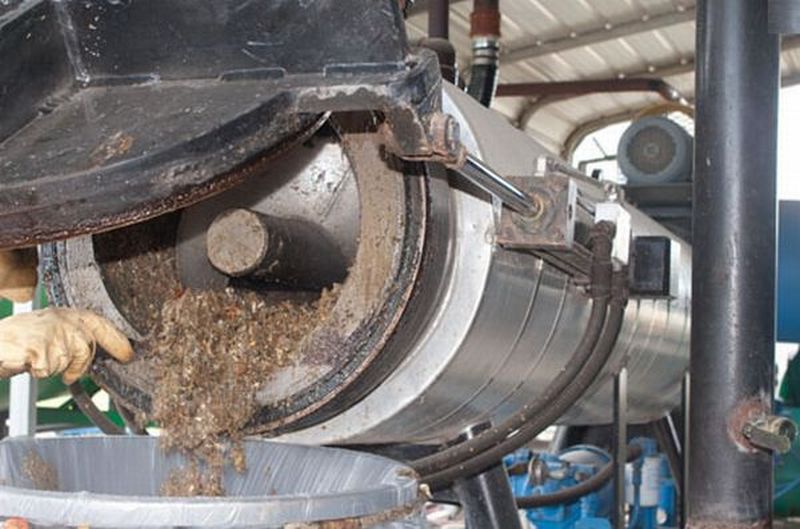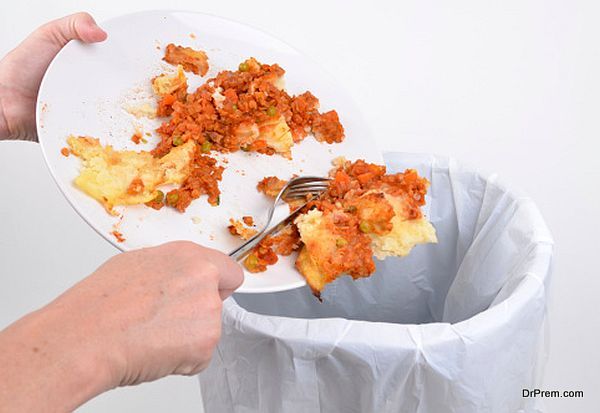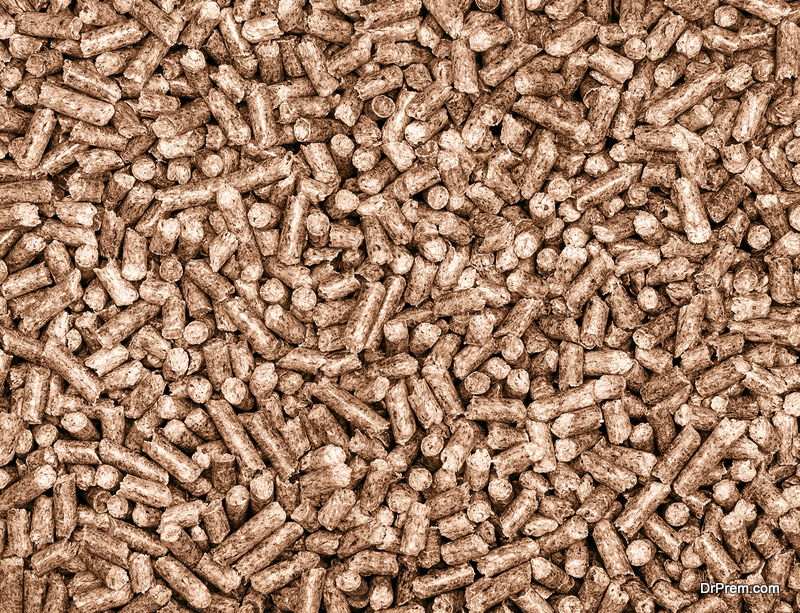Although on an individual basis, we might think that solar and wind energy generation might be enough. However, keeping in mind the magnanimous energy requirements of the modern man, this might not be the case. To satisfy this need, there is no dearth of those who’re making use of some of the most unconventional raw materials to generate clean energy. They know that no matter how infinitesimally small the effort is, it counts. Thermal Depolymerization is one such technique. Here’s everything you might want to know about it.
Thermal Depolymerization
 Thermal depolymerization is a process wherein depolymerization takes place with the help of hydrous pyrolysis. This reduces complex organic materials into light crude oil. Pyrolysis is nothing but the decomposition of any organic substance with no oxygen present. Waste products of different types such as biomass and plastic are usually treated to thermal depolymerization. This is fast gaining a lot of attention worldwide as an alternative source of energy. This process is particularly helpful as solid wastes contain carbon that can be chemically transformed into liquid fuel.
Thermal depolymerization is a process wherein depolymerization takes place with the help of hydrous pyrolysis. This reduces complex organic materials into light crude oil. Pyrolysis is nothing but the decomposition of any organic substance with no oxygen present. Waste products of different types such as biomass and plastic are usually treated to thermal depolymerization. This is fast gaining a lot of attention worldwide as an alternative source of energy. This process is particularly helpful as solid wastes contain carbon that can be chemically transformed into liquid fuel.
Trends
Thermal depolymerization is quite similar to the natural geological processes that go in the manufacture of fossil fuels. Long chain polymers of carbon, hydrogen and oxygen are subjected to heat and pressure. This helps in obtaining short chained petroleum hydrocarbons with close to 18 carbons.
The CWT (Changing World Technologies) process is very popularly used for thermal depolymerization. In this, the feedstock material is initially ground into tiny chunks and mixed with water. This is then subjected to high pressure and is heated at a constant volume to approximately 250ºC. This results in a mixture of solid minerals and crude hydrocarbons. These are then separated by fractional distillation and oil refining. Waste plastic and agricultural biomass of sugarcane, soya and corn are usually used in this process. Medical waste, sewage sludge and tires are the other materials that can undergo thermal depolymerization to obtain crude petroleum products.
Carthage plant products are also used in the thermal depolymerization process. Some of them are naphthenes, paraffins, olefins and aromatics.
The CWT process consists of chiefly three main steps:
1. Heating of the feedstock under pressure and pulping it into a water slurry
2. Flashing the slrry to a lower pressure and then separating oil from water
3. Heating the crude oil to a higher temperature to obtain light hydrocarbons in solid form.
While the initial phase should have a temperature of about 200ºC to 300 ºC, the next phase should have an optimum temperature of 500 ºC
The benefits
- Thermal depolymerization breaks strong chemical bonds of organic poisons which is extremely beneficial to balance the ecosystem.
- It can also safely do away with heavy metals by converting them to stable oxides from their original ionized forms.
- Thermal depolymerization is a useful process of recycling the energy content of organic products while retaining the water content. In this way you avoid drying while producing liquid fuel that separates from water in thermal depolymerization.
- We can utilize the vast bulk of waste content to produce liquid crude oil products. This will not only make good use of all the non bio-degradable waste but also help in producing some crude oil. However, in the present scenario, majority of the waste is not fit for this process.
- We can use the light hydrocarbons that result by thermal depolymerization as fuel sources, filters and fertilizers. Furthermore, we can also use them a substitute for coal and also in quelling the alarming rise of carbon dioxide concentration in the air. CO2 is one of the chief greenhouse gases that is responsible for global warming.
The lowdown
- We can only break down the compounds with long molecular chain into shorter ones. Smaller chained molecules such as methane or carbon dioxide are not suitable for this process.
- Most of the biomass is already being used as animal feed or fertilizers and so are not really available in plenty for this process.
The impact
Using water as medium, thermal depolymerization process not only helps in making good use of waste matter and by products, but it also produces fuel resources that can be a boon for the entire world. Invaluable fuel products can be produced in an environmentally friendly way from low quality feed stocks and organic waste. It also eliminates nitrogen and sulfur compounds and brings out clean and highly useful crude oil products.
Thermal depolymerization has yet to make an impact as an alternative method for liquid crude oil. Since the cost of the whole process is quite high, maintenance of the depolymerization plants becomes a tedious affair. There are just a handful of depolymerization plants in the world as of now, but the scenario could change in the near future.
If taken up in a big way, thermal depolymerization could well be the answer to meet the acute shortage and the dwindling resources of fuel all over the world. This is one way that shows promise as an important energy source in the coming decades.
Some more unconventional sources of energy
Owing to the looming concerns regarding air pollution, global warming, and climate change, environmentalists all around the world are encouraging governments and individuals to generate renewable energy in all ways possible. Thermal depolymerization isn’t the only unconventional energy source. There are many others to the list. Let us see what they are:
1. Urine:
 With a population of over seven billion human beings, there is no shortage of the waste. Although we’re used to flushing it out of sight, there is a large number of climate advocates who believe that we’re not just flushing urine and feces, but also the future of energy independence. According to statistics, yes there are people who keep track of the amount of urine people produce. In fact, according to estimates we produce and waste around 10.5 billion liters of urine every day.
With a population of over seven billion human beings, there is no shortage of the waste. Although we’re used to flushing it out of sight, there is a large number of climate advocates who believe that we’re not just flushing urine and feces, but also the future of energy independence. According to statistics, yes there are people who keep track of the amount of urine people produce. In fact, according to estimates we produce and waste around 10.5 billion liters of urine every day.
To make urine more productive, researchers have developed microbial fuel cells that can convert urine into usable electricity. Although the research is still in its infancy, a young team from Nigeria did prototype a machine that generated six hours worth of power from a liter of pee.
2. Footsteps:

Imagine if all you had to do to generate energy was walk. Although it initially seems a farfetched thought, Pavegen, a company from London, has pioneered the idea and converted it into a working system that uses the principles of piezoelectric energy generation to transform footsteps into usable electricity.
The research is still in its nascent stage. Furthermore, the team expects that if they use the technology in an Australian university and install it on 3.1 percent of the floor that witnesses the most human traffic, the system would be able to generate 1.1mW of clean power.
3. Food Waste:

Nobody likes the sight and smell of rotting food in an around the home and the best we usually do to counter the mess is simply throw it in the trash bin and wait for the garbage collectors to do the needful. However, according to researchers we’re not just wasting precious food, but also our chances to generate a few watts of clean electric power.
The idea is based on the fact that degrading food and organic matter produces biogas, mostly methane, which can easily be converted into usable electricity. Unlike some other farfetched ideas, there are a number of small scale industries who are making use of the technique to generate a small percentage of their electricity requirements from that smelly mess.
4. Cows:

Cattle in general consume a lot of grass and organic matter and quite obviously, they expel large quantities of it too in the form of gas. Cows are such gas expellers that some scientists even believe that their burps have contributed to global warming as well.
No matter how ridiculous it might sound, cattle burps contain large quantities of methane. We can use this and harvest it as a renewable source of power. The main problem here is that it would be kind of weird attaching burp and fart harvesting balloons to a large number of cows to generate any significant energy.
4. Breathing:

If harness cow farts and human urine to produce urine doesn’t seem to do the trick, there are concepts that aim to harvest energy while you do nothing, expect breathing, which you have to do anyway. Made for the lazy environmentalists, the concept product we’re talking about is the AIRE mask, which aims to harvest your breath in the form of wind energy to generate ample power to recharge your portable mobile devices or even a few implants, such as pacemakers.
Quite frankly, it might sound a weird idea to wear a mask while recharging your phone, but considering the fact that there is no dearth of those who love doing nothing all day while showing their concerns for the depleting conditions of the environment, the entire idea doesn’t look that weird either.


